Abstract
OBJECTIVE: To compare different indicators for assessing the quality of drug prescribing and establish their agreement in identifying doctors who may not adhere to treatment guidelines. DATA SOURCES/STUDY SETTING: Data from 181 general practitioners (GPs) from The Netherlands. The case of asthma is used as an example because, in this area, different quality indicators exist whose validity is questioned. The study is part of the European Drug Education Project. STUDY DESIGN: Spearman rank correlations were assessed among the GPs' scores on self-report instruments, aggregated prescribing indicators, and individualized prescribing indicators. Kappa values were calculated as agreement measures for identifying low adherence to the guidelines. DATA COLLECTION: Prescribing data from GPs were collected through pharmacies, public health insurance companies, or computerized GP databases. Two self-report instruments were mailed to the GPs. The GPs first received a questionnaire assessing their competence regarding the treatment of asthma patients. Three months later they received a series of 16 written asthma cases asking for their intended treatment for each case. PRINCIPAL FINDINGS: Correlations between scores based on self-report instruments and indicators based on actual prescribing data were mostly nonsignificant and varied between 0 and 0.21. GPs identified as not adhering to the guidelines by the prescribing indicators often had high scores on the self-report instruments. Correlations between 0.20 and 0.55 were observed among indicators based on aggregated prescribing data and those based on individualized data. The agreement for identifying low adherence was small, with kappa values ranging from 0.19 to 0.30. CONCLUSIONS: Indicators based on self-report instruments seem to overestimate guideline adherence. Indicators assessing prescribing quality at an aggregated level give clearly different results, as compared to indicators evaluating prescribing data on an individual patient level. Caution is needed when using such prescribing indicators to identify low adherence to guidelines. Further validation studies using a gold standard comparison are needed to define the best possible indicator.
Full text
PDF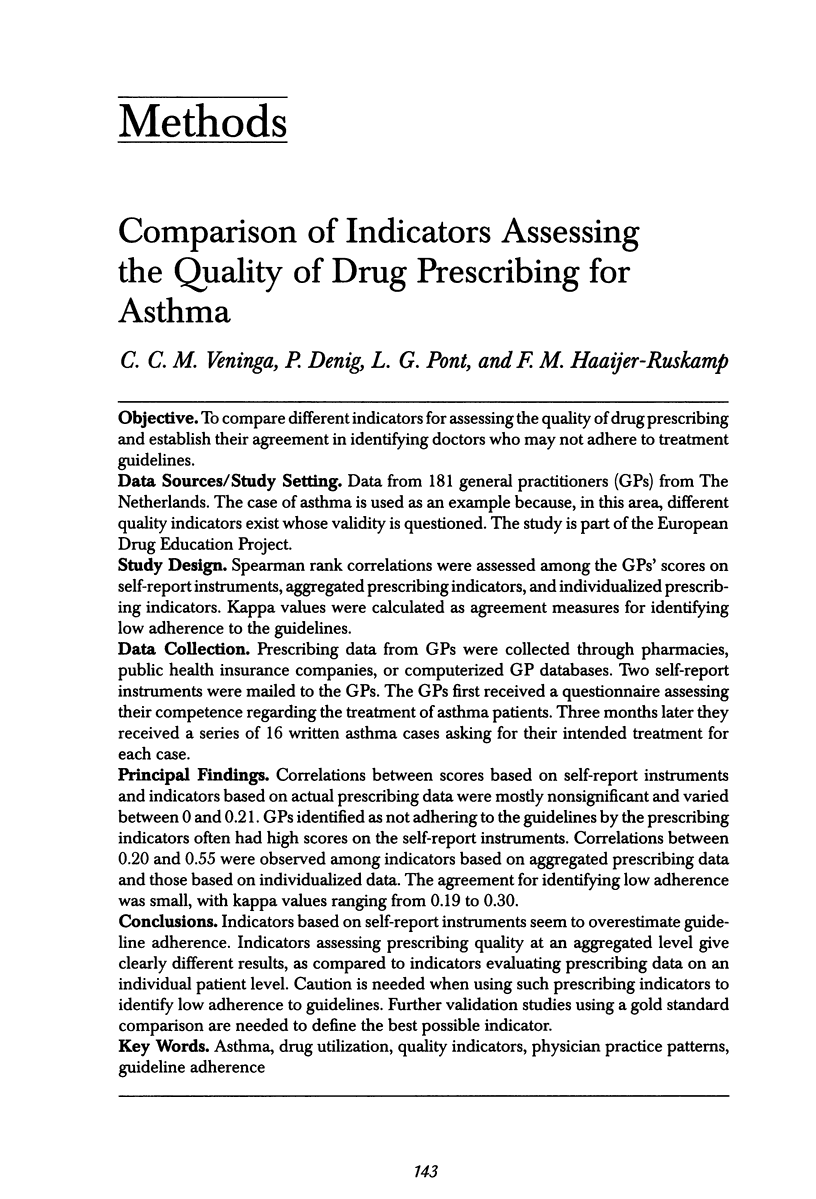

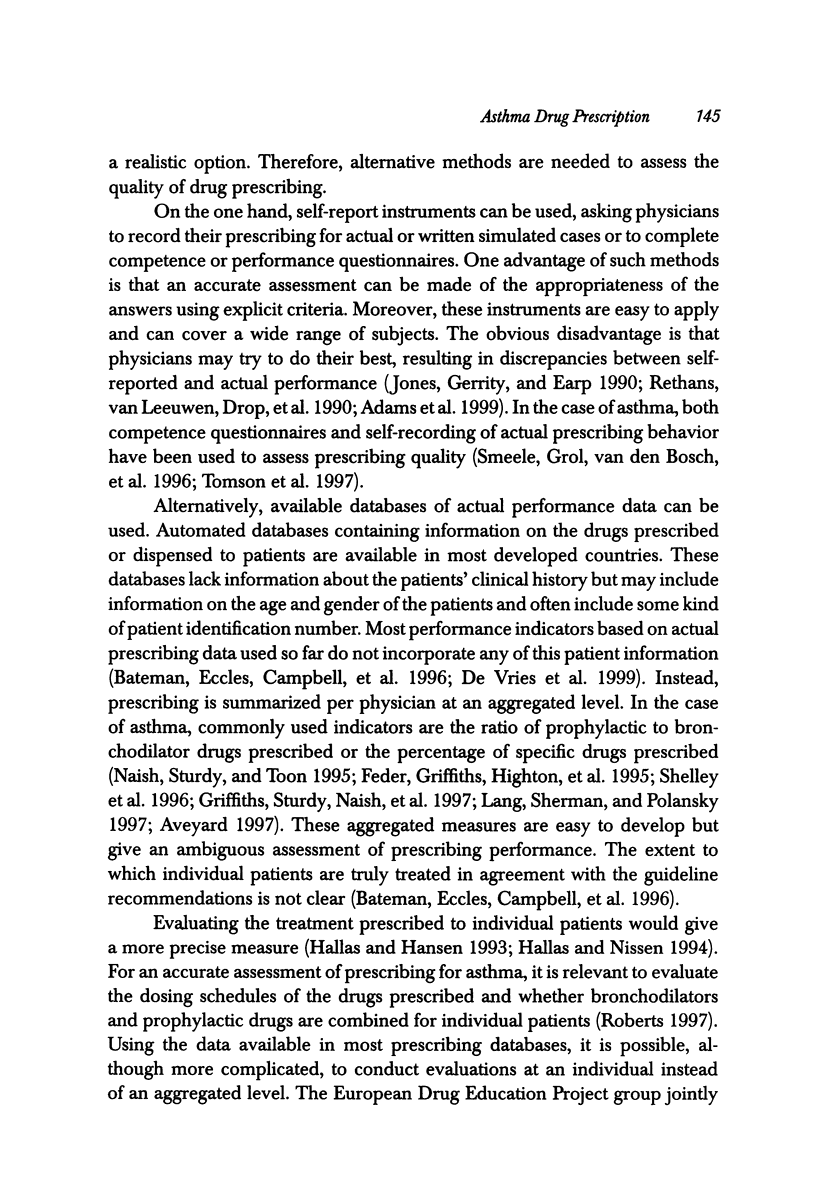
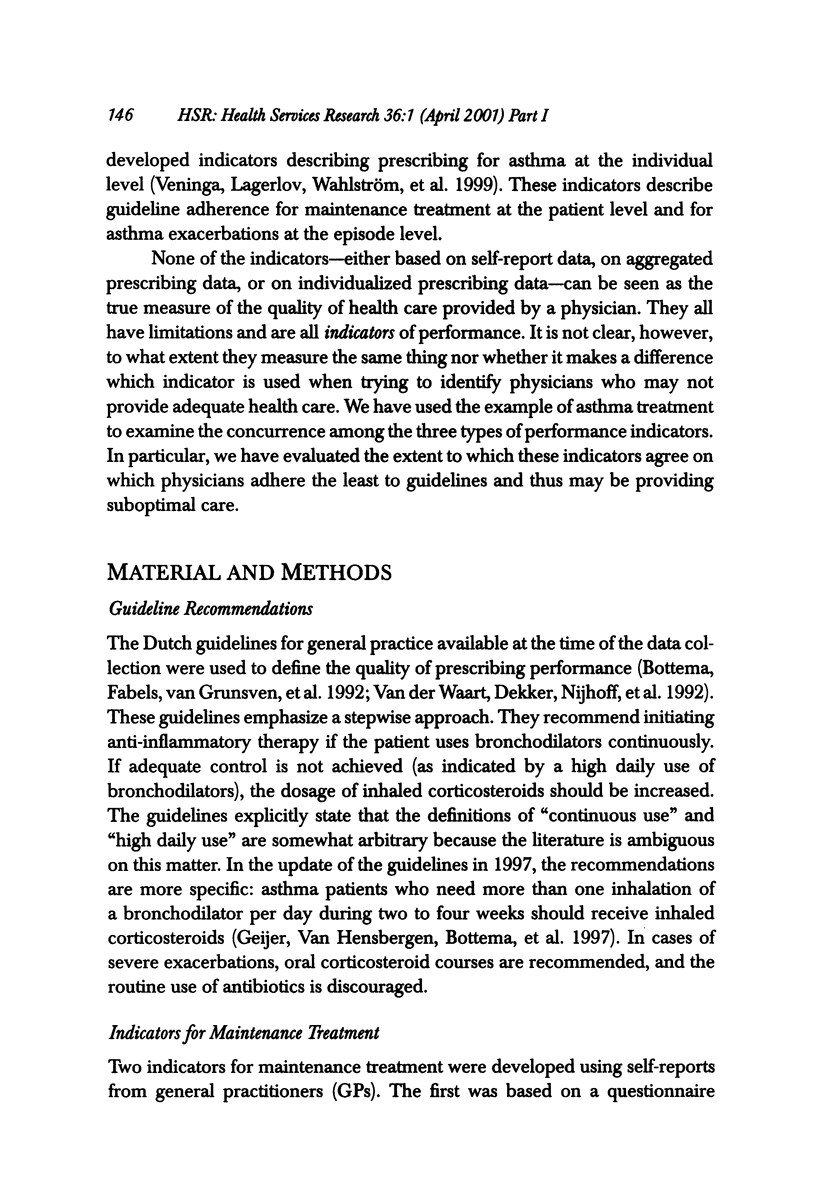
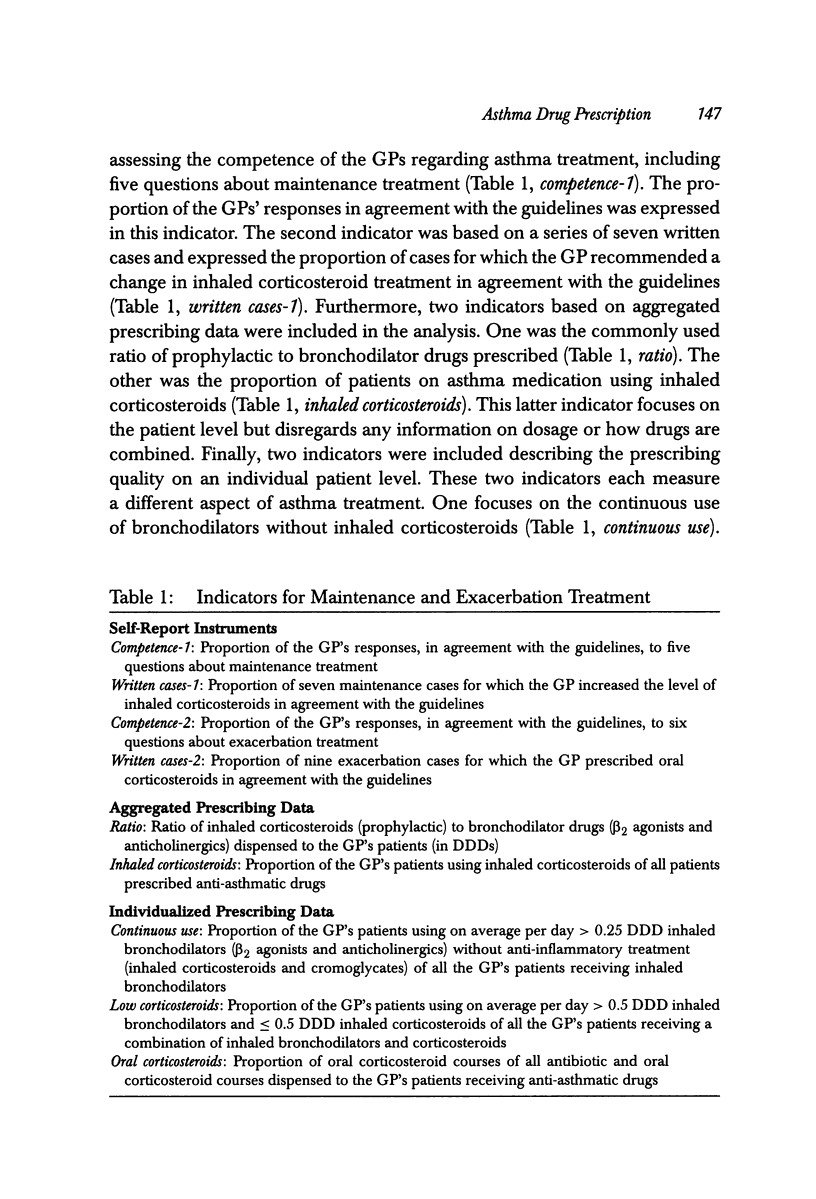
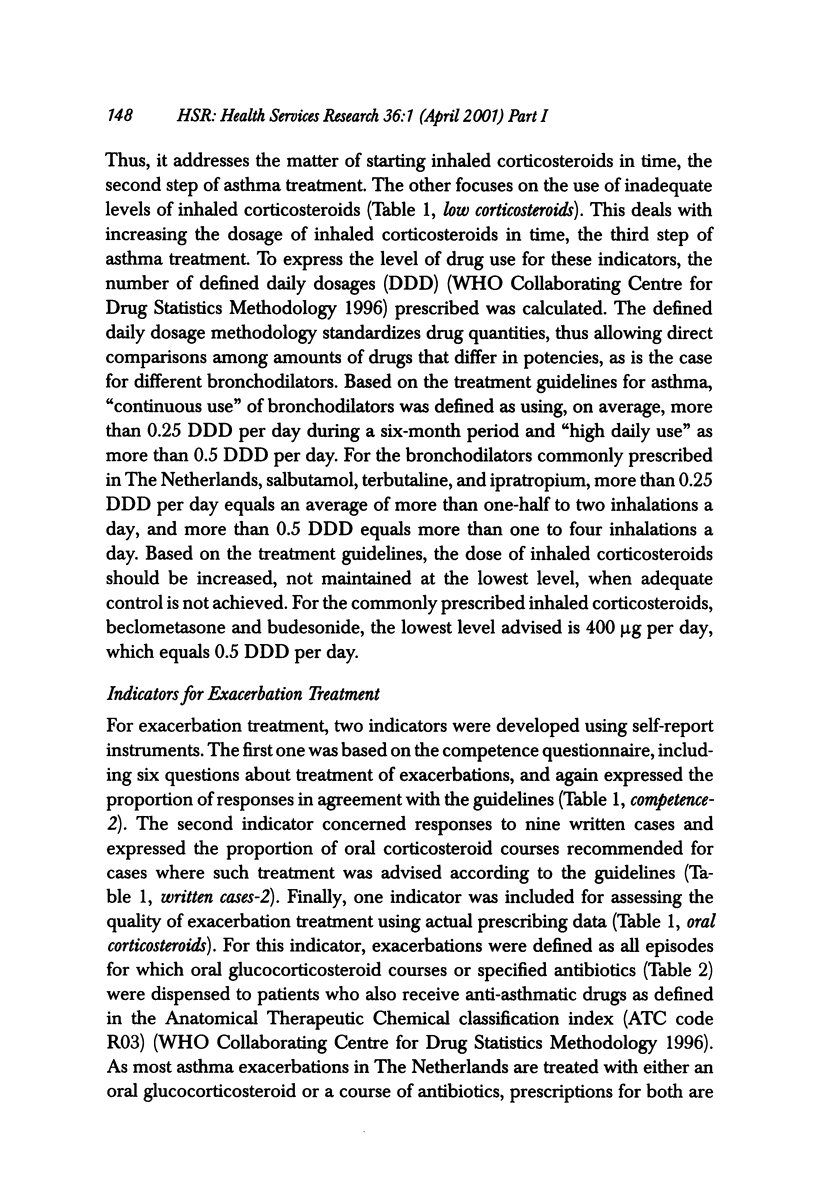
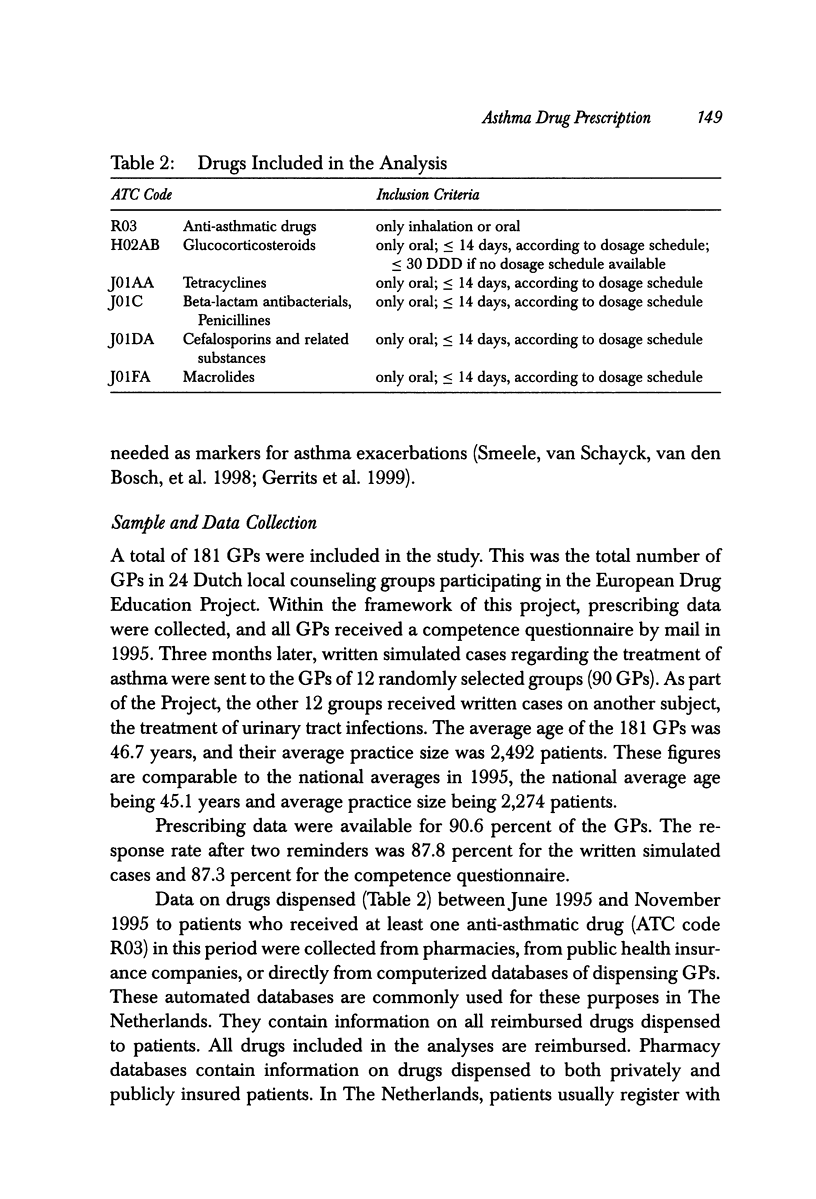
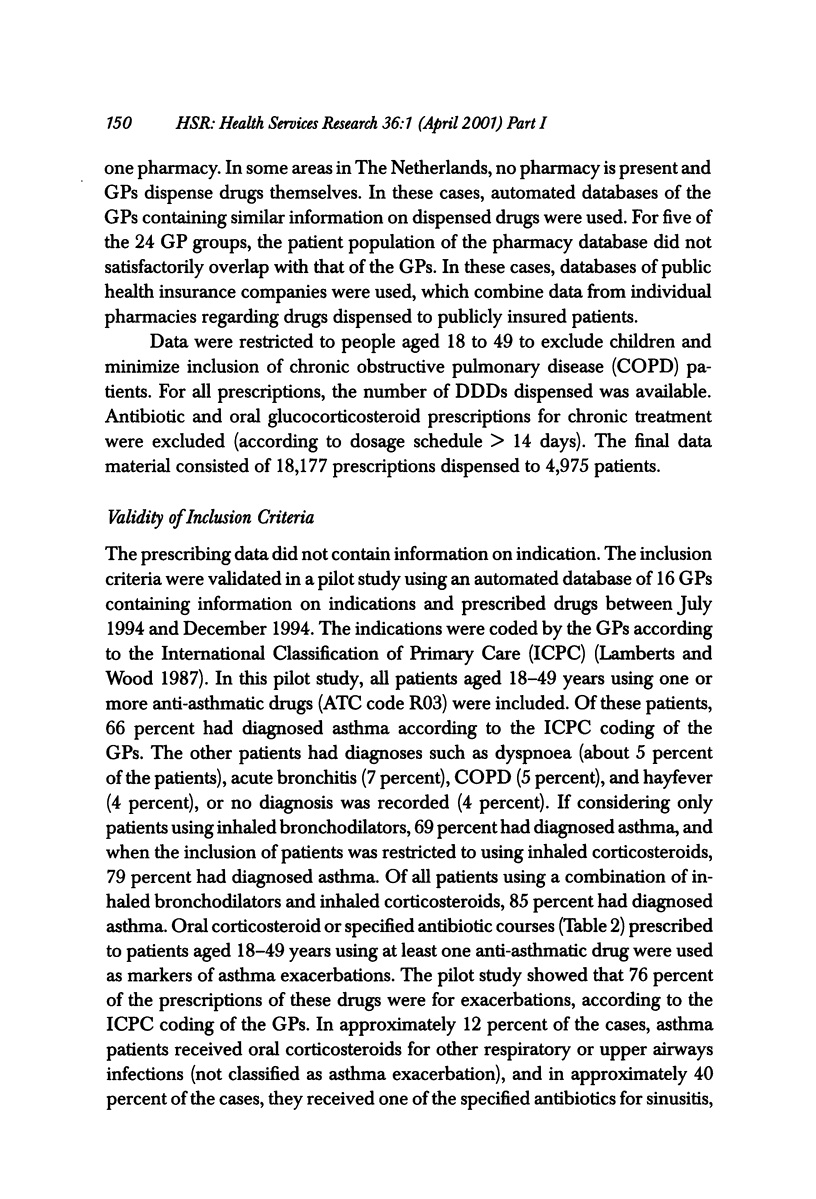
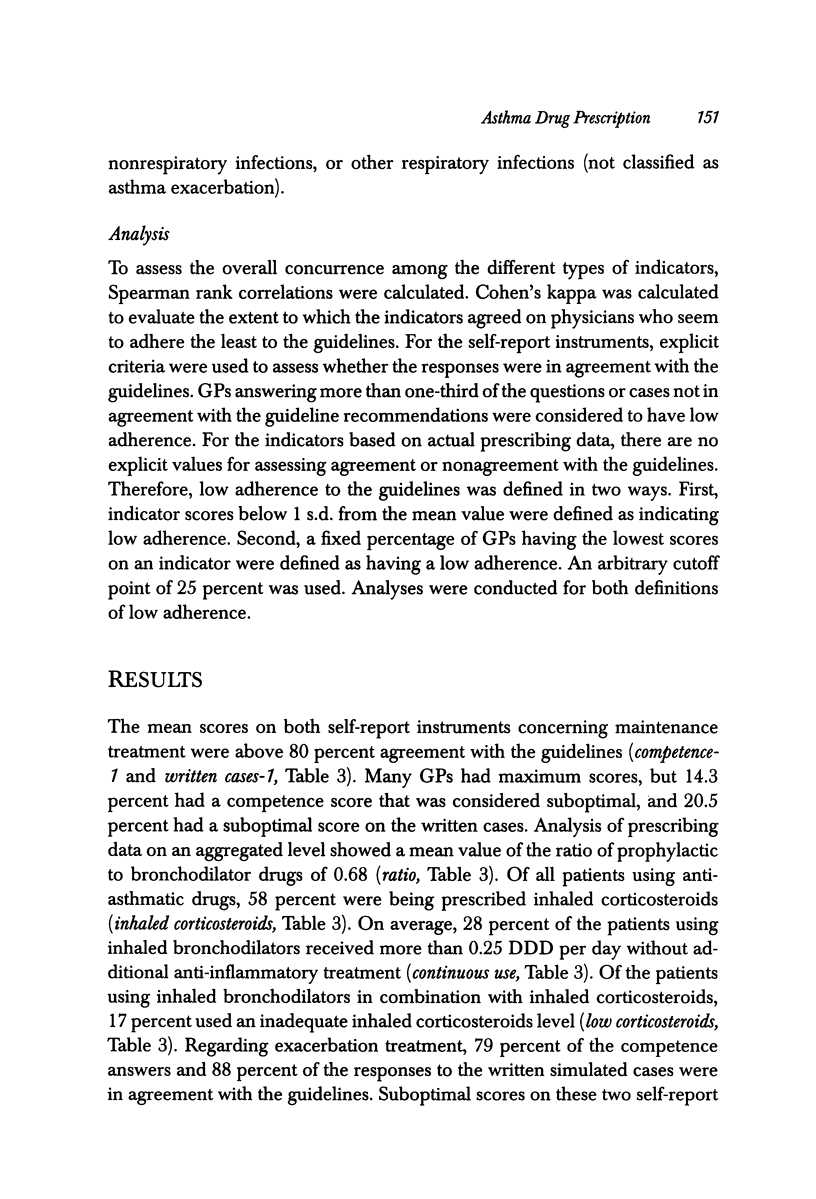
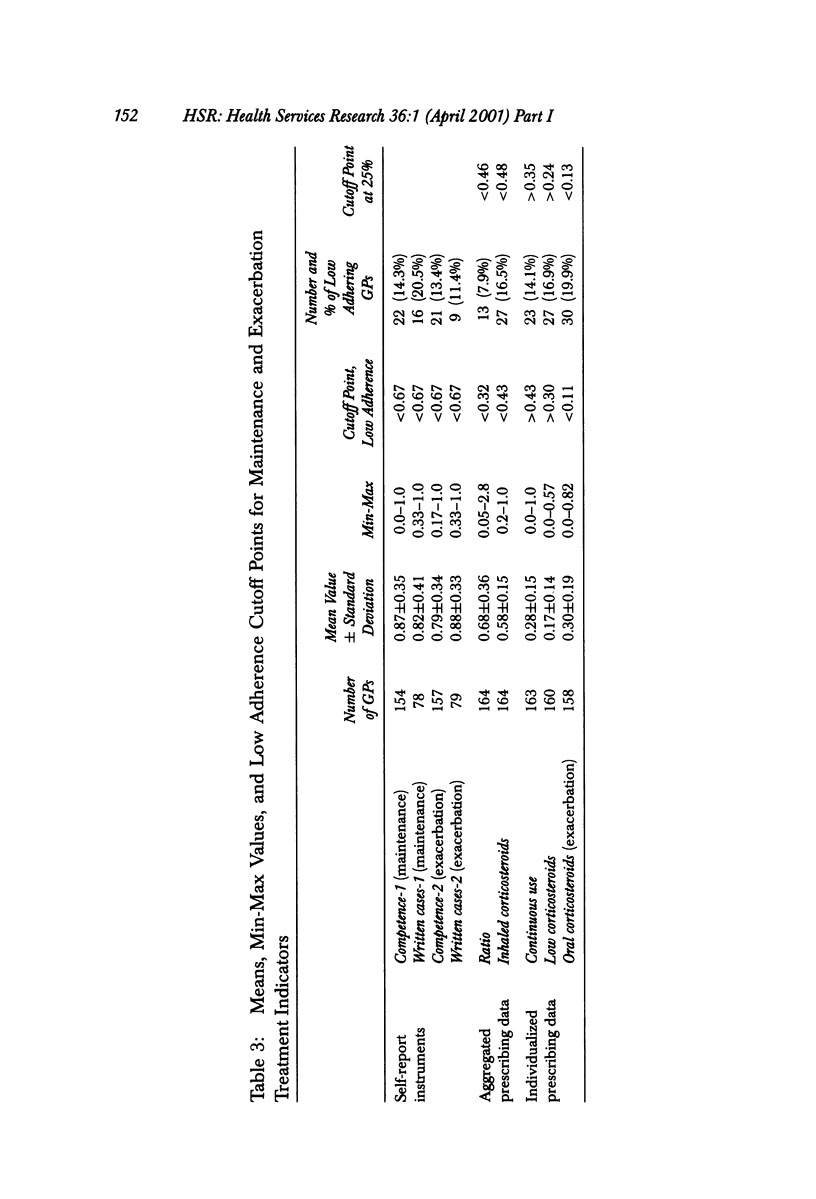
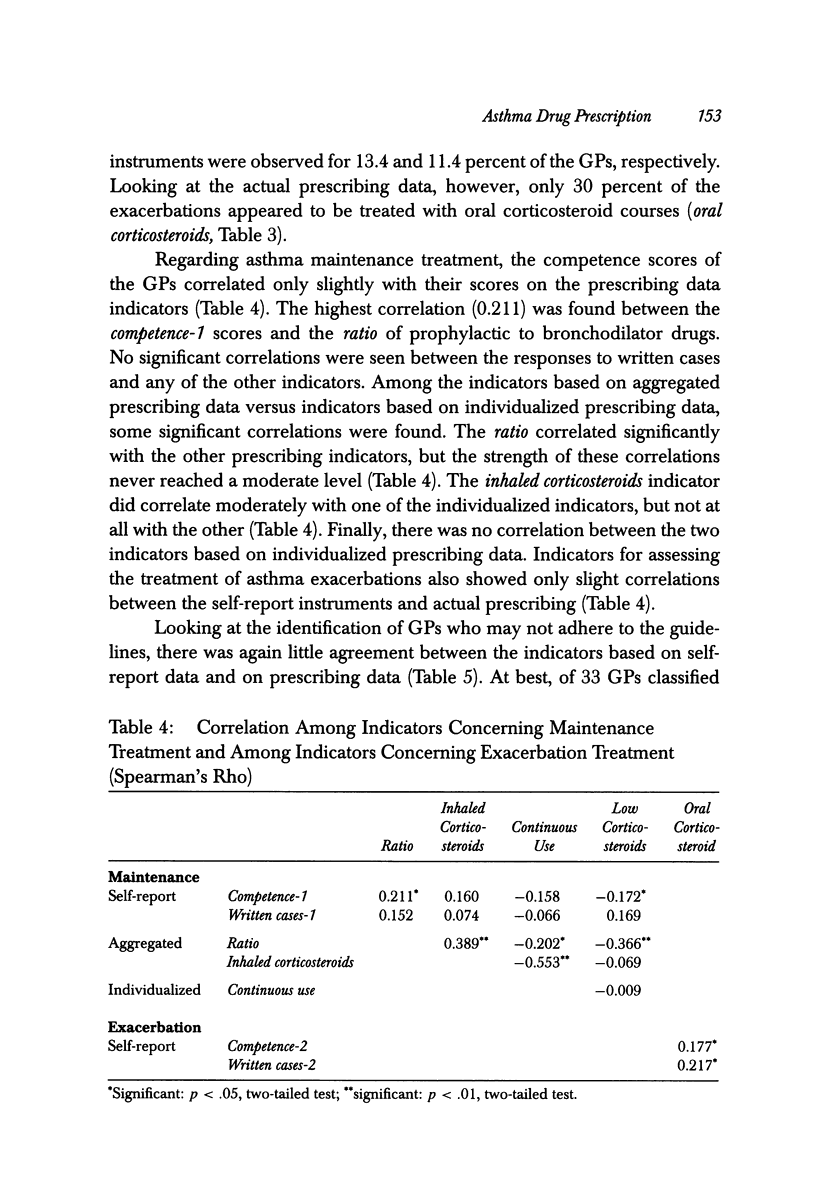
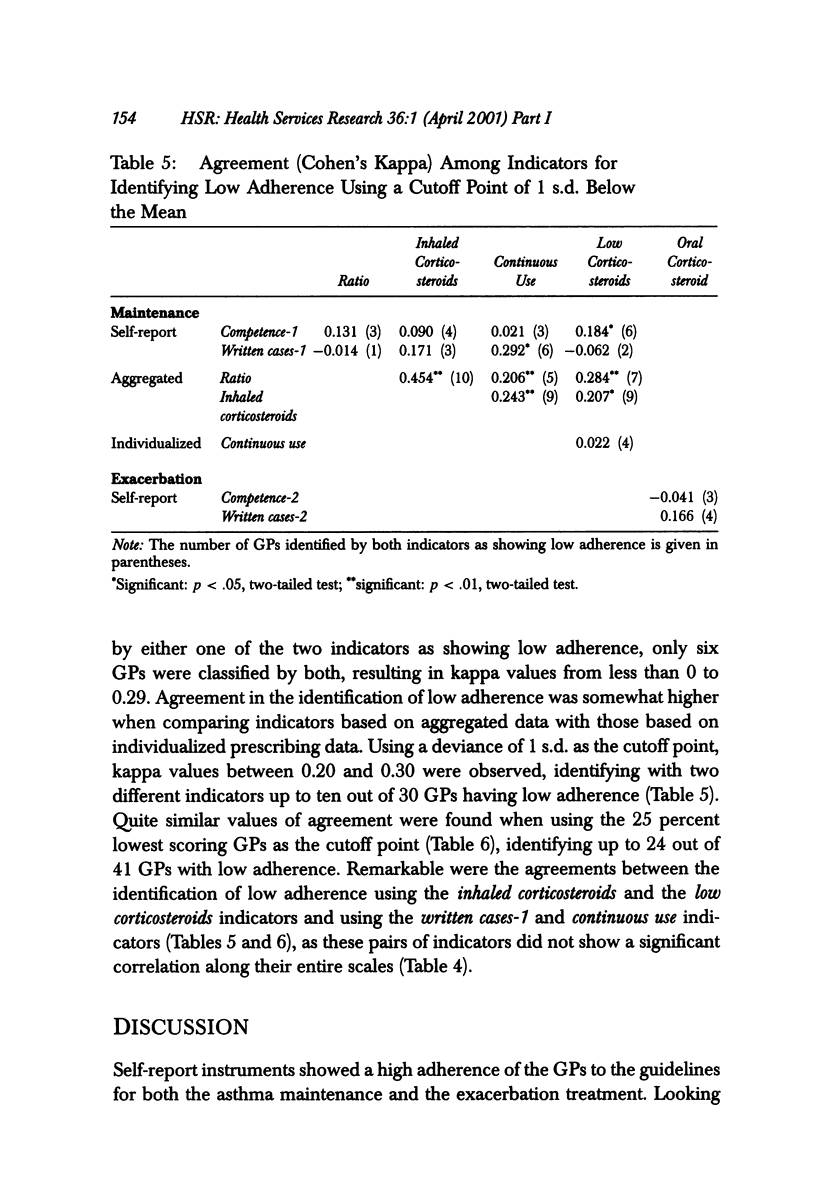
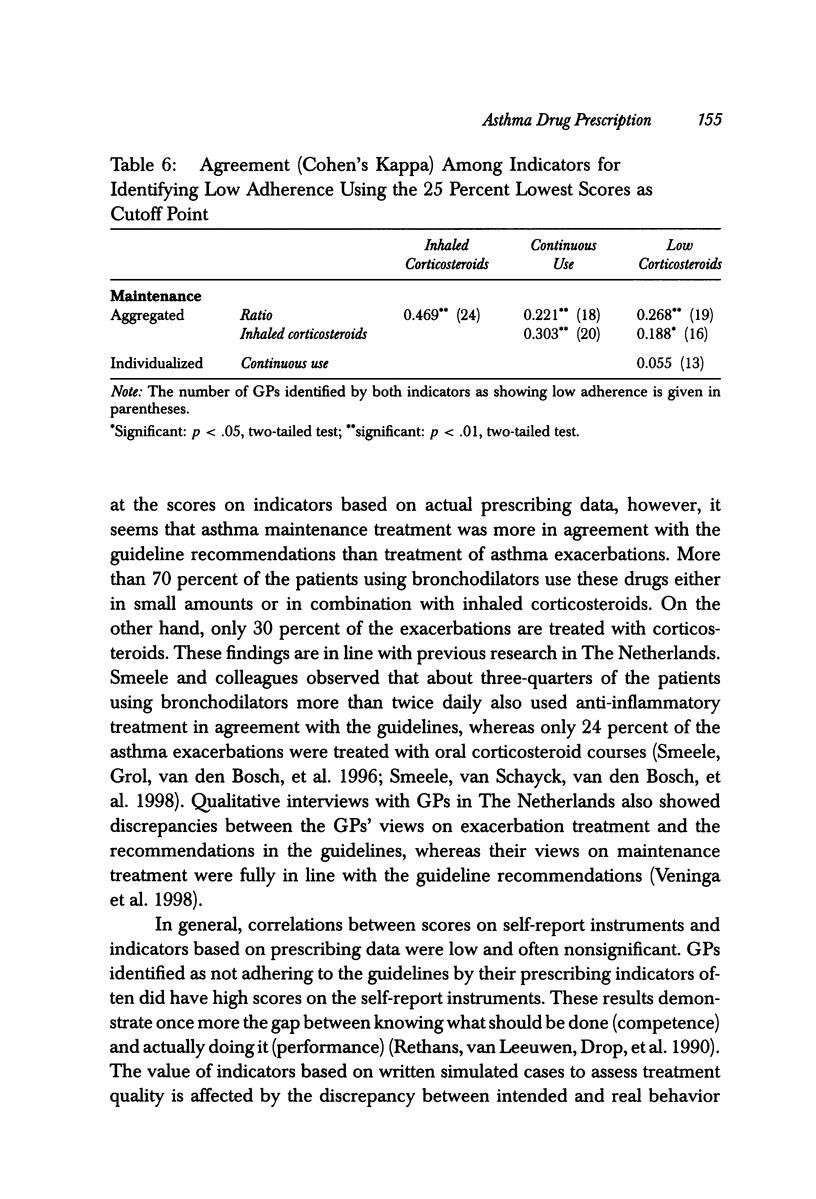
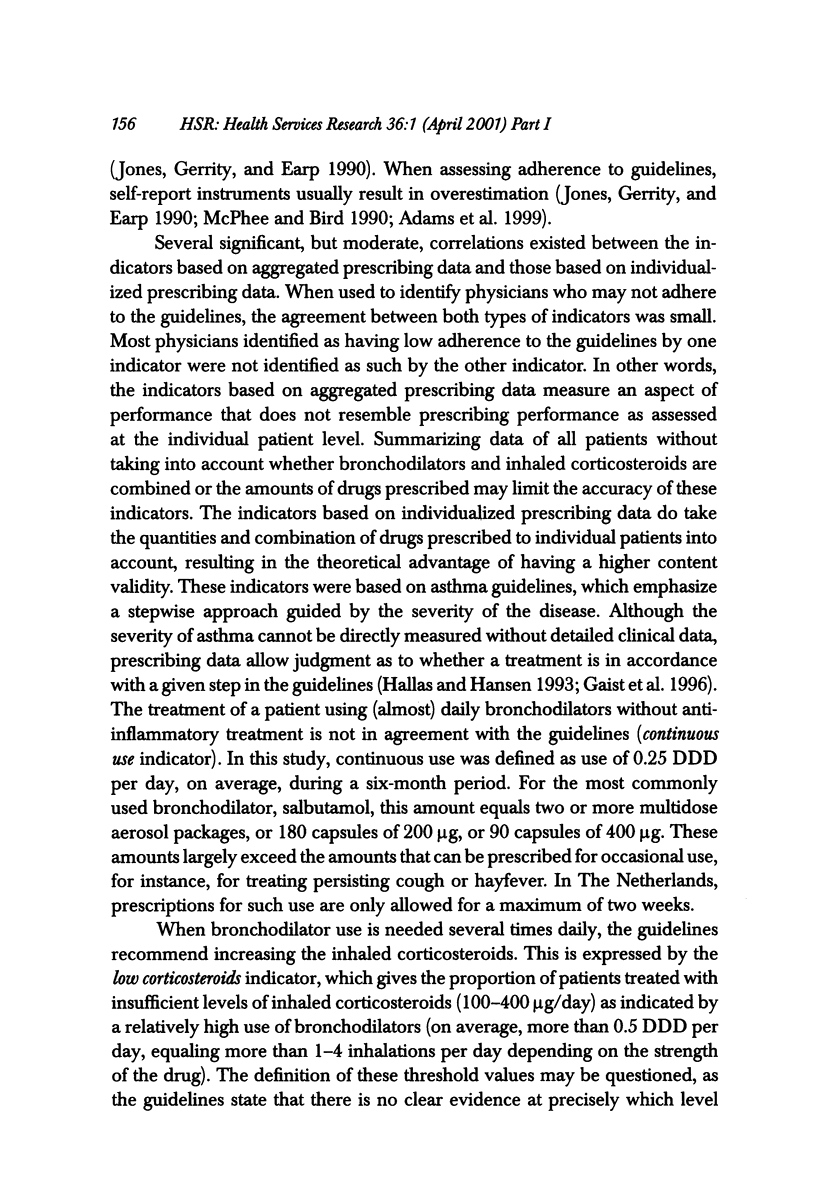
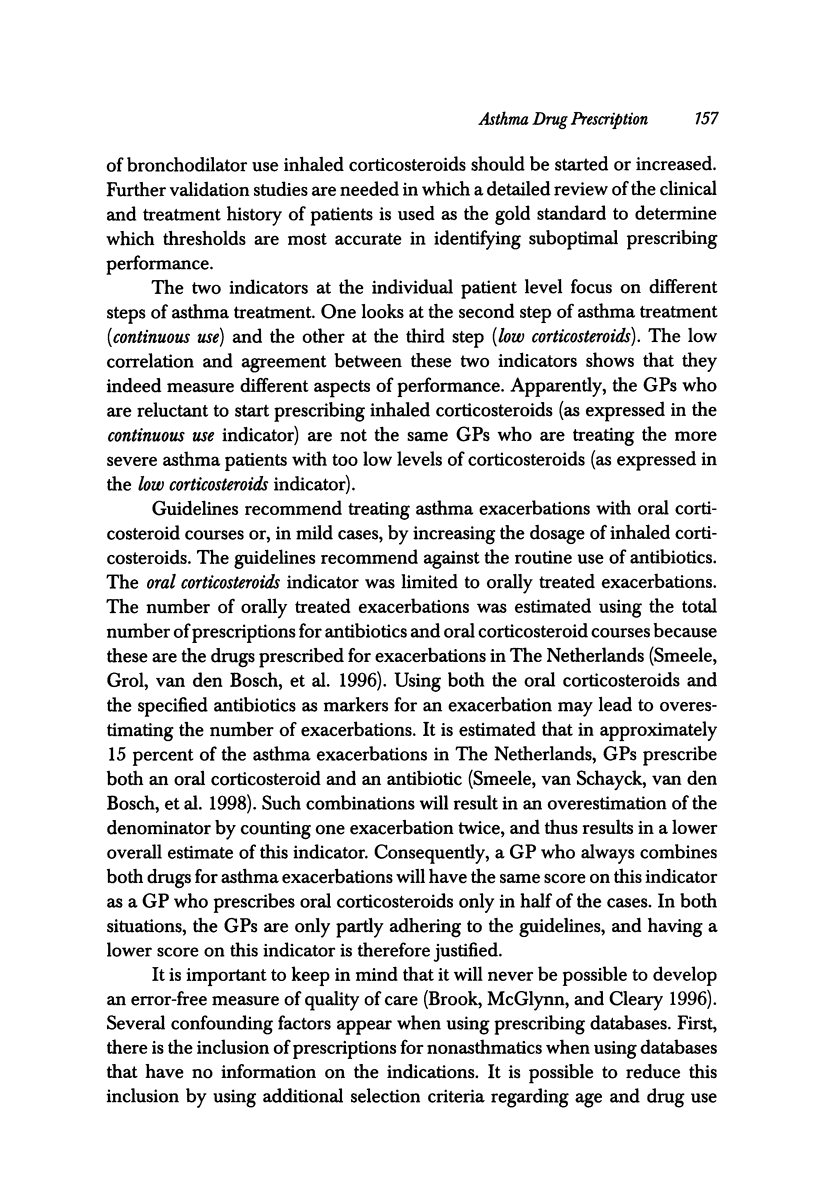
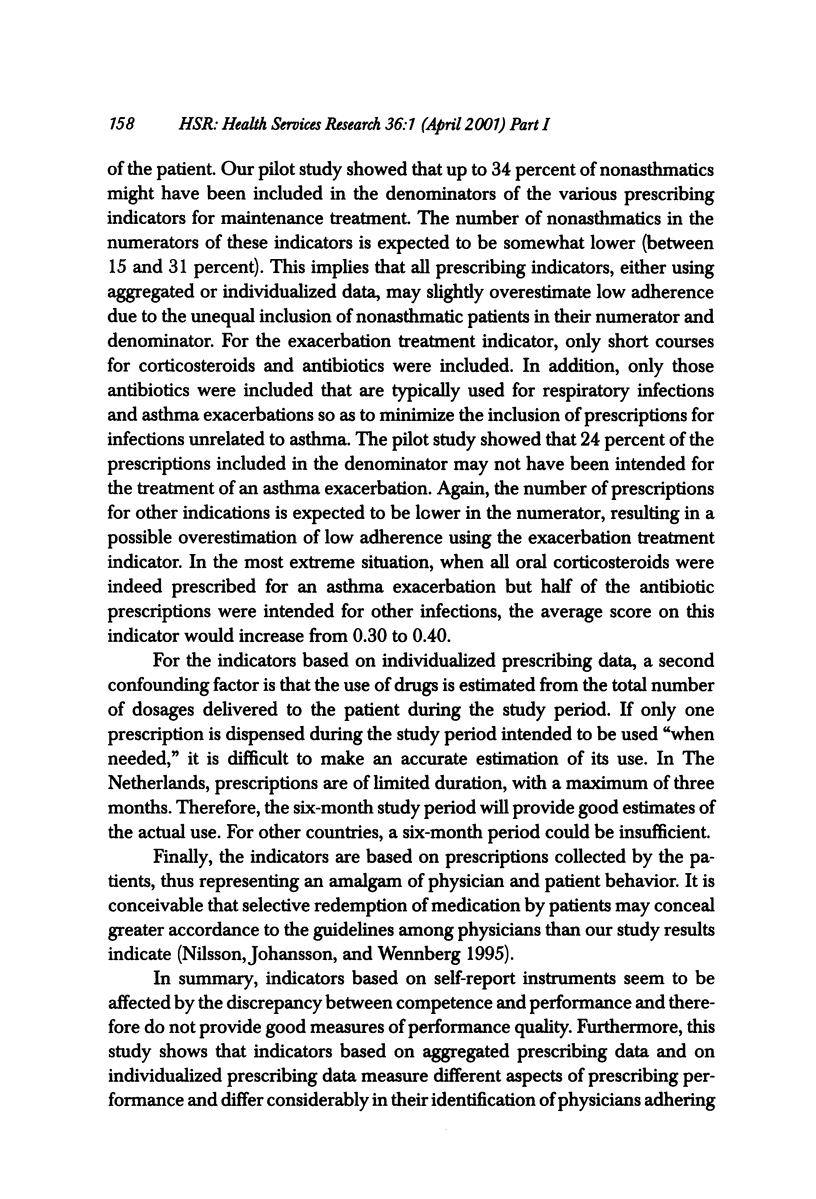
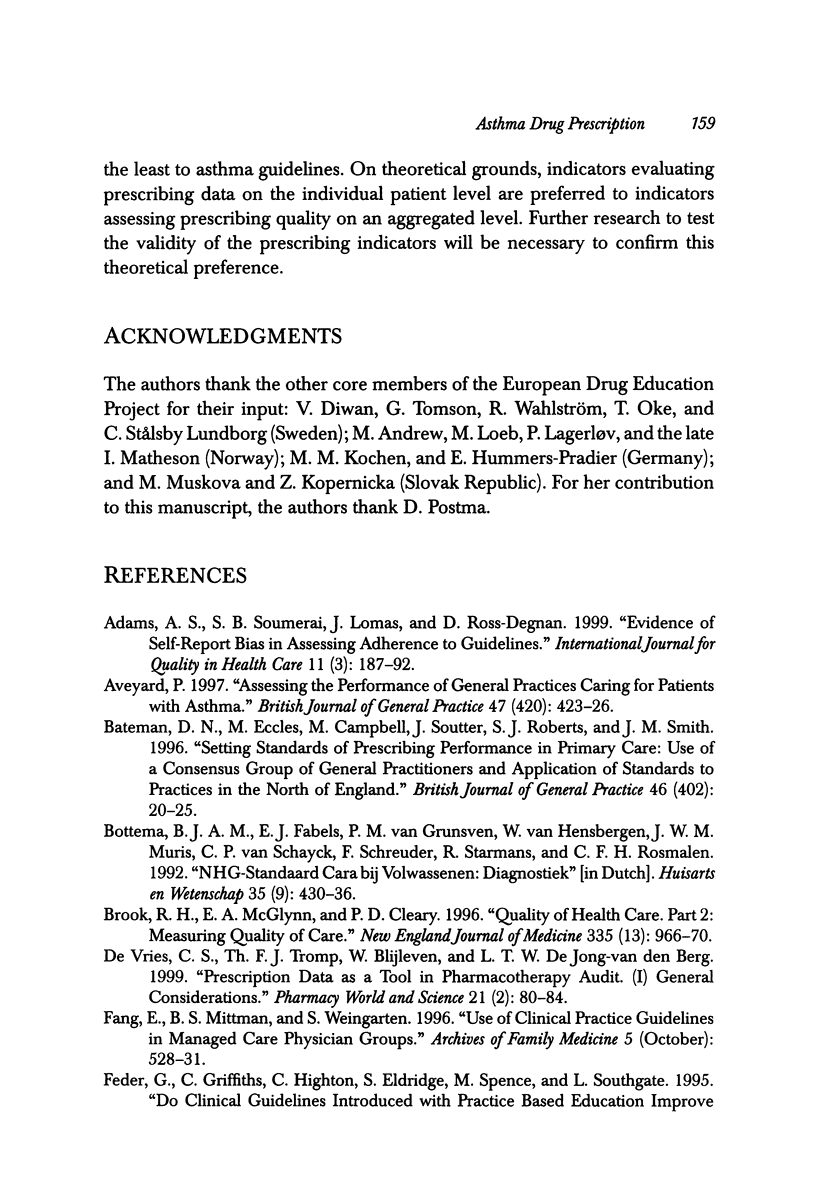
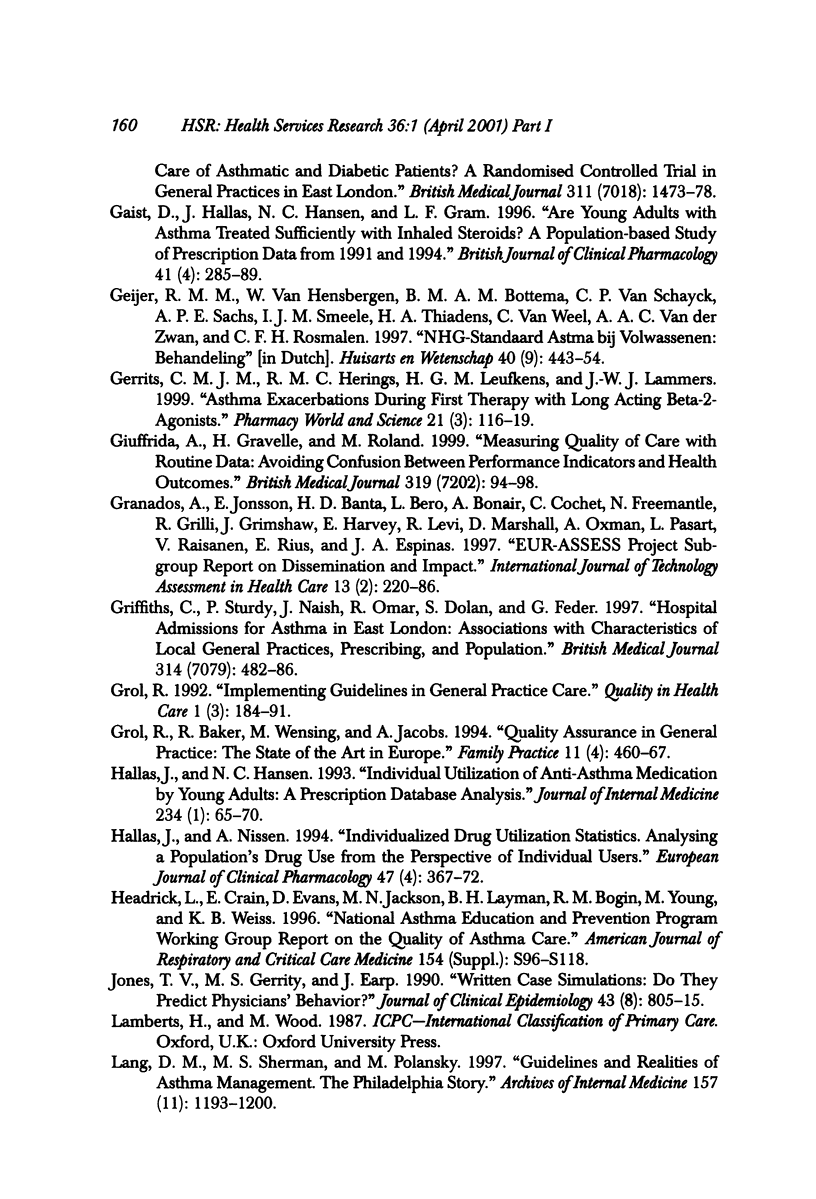
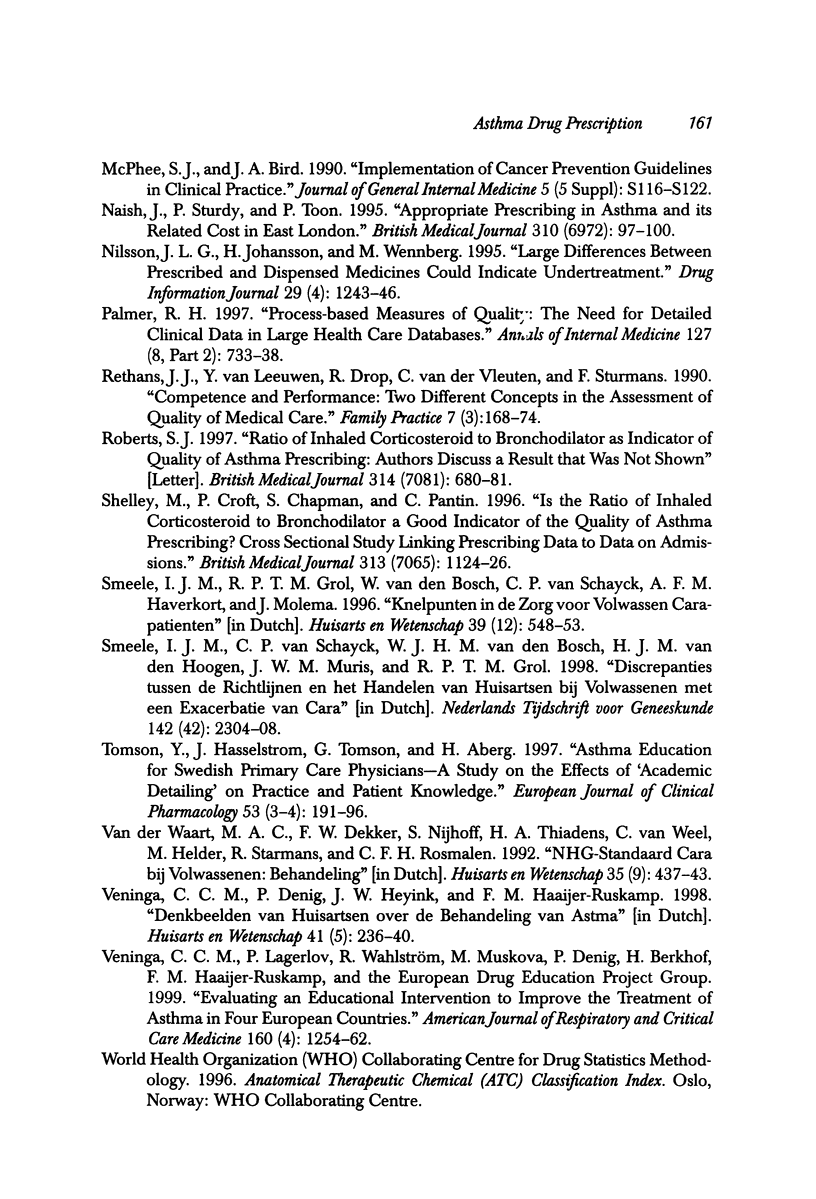
Selected References
These references are in PubMed. This may not be the complete list of references from this article.
- Adams A. S., Soumerai S. B., Lomas J., Ross-Degnan D. Evidence of self-report bias in assessing adherence to guidelines. Int J Qual Health Care. 1999 Jun;11(3):187–192. doi: 10.1093/intqhc/11.3.187. [DOI] [PubMed] [Google Scholar]
- Bateman D. N., Eccles M., Campbell M., Soutter J., Roberts S. J., Smith J. M. Setting standards of prescribing performance in primary care: use of a consensus group of general practitioners and application of standards to practices in the north of England. Br J Gen Pract. 1996 Jan;46(402):20–25. [PMC free article] [PubMed] [Google Scholar]
- Brook R. H., McGlynn E. A., Cleary P. D. Quality of health care. Part 2: measuring quality of care. N Engl J Med. 1996 Sep 26;335(13):966–970. doi: 10.1056/NEJM199609263351311. [DOI] [PubMed] [Google Scholar]
- Fang E., Mittman B. S., Weingarten S. Use of clinical practice guidelines in managed care physician groups. Arch Fam Med. 1996 Oct;5(9):528–531. doi: 10.1001/archfami.5.9.528. [DOI] [PubMed] [Google Scholar]
- Gaist D., Hallas J., Hansen N. C., Gram L. F. Are young adults with asthma treated sufficiently with inhaled steroids? A population-based study of prescription data from 1991 and 1994. Br J Clin Pharmacol. 1996 Apr;41(4):285–289. doi: 10.1046/j.1365-2125.1996.03154.x. [DOI] [PMC free article] [PubMed] [Google Scholar]
- Gerrits C. M., Herings R. M., Leufkens H. G., Lammers J. W. Asthma exacerbations during first therapy with long acting beta 2-agonists. Pharm World Sci. 1999 Jun;21(3):116–119. doi: 10.1023/a:1008618700934. [DOI] [PubMed] [Google Scholar]
- Giuffrida A., Gravelle H., Roland M. Measuring quality of care with routine data: avoiding confusion between performance indicators and health outcomes. BMJ. 1999 Jul 10;319(7202):94–98. doi: 10.1136/bmj.319.7202.94. [DOI] [PMC free article] [PubMed] [Google Scholar]
- Granados A., Jonsson E., Banta H. D., Bero L., Bonair A., Cochet C., Freemantle N., Grilli R., Grimshaw J., Harvey E. EUR-ASSESS Project Subgroup Report on Dissemination and Impact. Int J Technol Assess Health Care. 1997 Spring;13(2):220–286. doi: 10.1017/s0266462300010370. [DOI] [PubMed] [Google Scholar]
- Griffiths C., Sturdy P., Naish J., Omar R., Dolan S., Feder G. Hospital admissions for asthma in east London: associations with characteristics of local general practices, prescribing, and population. BMJ. 1997 Feb 15;314(7079):482–486. doi: 10.1136/bmj.314.7079.482. [DOI] [PMC free article] [PubMed] [Google Scholar]
- Grol R., Baker R., Wensing M., Jacobs A. Quality assurance in general practice: the state of the art in Europe. Fam Pract. 1994 Dec;11(4):460–467. doi: 10.1093/fampra/11.4.460. [DOI] [PubMed] [Google Scholar]
- Grol R. Implementing guidelines in general practice care. Qual Health Care. 1992 Sep;1(3):184–191. doi: 10.1136/qshc.1.3.184. [DOI] [PMC free article] [PubMed] [Google Scholar]
- Hallas J., Hansen N. C. Individual utilization of anti-asthma medication by young adults: a prescription database analysis. J Intern Med. 1993 Jul;234(1):65–70. doi: 10.1111/j.1365-2796.1993.tb00706.x. [DOI] [PubMed] [Google Scholar]
- Hallas J., Nissen A. Individualized drug utilization statistics. Analysing a population's drug use from the perspective of individual users. Eur J Clin Pharmacol. 1994;47(4):367–372. doi: 10.1007/BF00191170. [DOI] [PubMed] [Google Scholar]
- Headrick L., Crain E., Evans D., Jackson M. N., Layman B. H., Bogin R. M., Young M., Weiss K. B. National Asthma Education and Prevention Program working group report on the quality of asthma care. Am J Respir Crit Care Med. 1996 Sep;154(3 Pt 2):S96–118. doi: 10.1164/ajrccm/154.3_Pt_2.S96. [DOI] [PubMed] [Google Scholar]
- Jones T. V., Gerrity M. S., Earp J. Written case simulations: do they predict physicians' behavior? J Clin Epidemiol. 1990;43(8):805–815. doi: 10.1016/0895-4356(90)90241-g. [DOI] [PubMed] [Google Scholar]
- Lang D. M., Sherman M. S., Polansky M. Guidelines and realities of asthma management. The Philadelphia story. Arch Intern Med. 1997 Jun 9;157(11):1193–1200. [PubMed] [Google Scholar]
- McPhee S. J., Bird J. A. Implementation of cancer prevention guidelines in clinical practice. J Gen Intern Med. 1990 Sep-Oct;5(5 Suppl):S116–S122. doi: 10.1007/BF02600856. [DOI] [PubMed] [Google Scholar]
- Naish J., Sturdy P., Toon P. Appropriate prescribing in asthma and its related cost in east London. BMJ. 1995 Jan 14;310(6972):97–100. doi: 10.1136/bmj.310.6972.97. [DOI] [PMC free article] [PubMed] [Google Scholar]
- Palmer R. H. Process-based measures of quality: the need for detailed clinical data in large health care databases. Ann Intern Med. 1997 Oct 15;127(8 Pt 2):733–738. doi: 10.7326/0003-4819-127-8_part_2-199710151-00059. [DOI] [PubMed] [Google Scholar]
- Rethans J. J., van Leeuwen Y., Drop R., van der Vleuten C., Sturmans F. Competence and performance: two different concepts in the assessment of quality of medical care. Fam Pract. 1990 Sep;7(3):168–174. doi: 10.1093/fampra/7.3.168. [DOI] [PubMed] [Google Scholar]
- Roberts S. J. Ratio of inhaled corticosteroid to bronchodilator as indicator of quality of asthma prescribing. Authors discuss a result that was not shown. BMJ. 1997 Mar 1;314(7081):680–682. [PMC free article] [PubMed] [Google Scholar]
- Shelley M., Croft P., Chapman S., Pantin C. Is the ratio of inhaled corticosteroid to bronchodilator a good indicator of the quality of asthma prescribing? Cross sectional study linking prescribing data to data on admissions. BMJ. 1996 Nov 2;313(7065):1124–1126. doi: 10.1136/bmj.313.7065.1124. [DOI] [PMC free article] [PubMed] [Google Scholar]
- Smeele I. J., Van Schayck C. P., Van Den Bosch W. J., Van Den Hoogen H. J., Muris J. W., Grol R. P. Discrepantie tussen de richtlijnen en het handelen van huisartsen bij volwassenen met exacerbatie van cara. Ned Tijdschr Geneeskd. 1998 Oct 17;142(42):2304–2308. [PubMed] [Google Scholar]
- Tomson Y., Hasselström J., Tomson G., Aberg H. Asthma education for Swedish primary care physicians--a study on the effects of "academic detailing" on practice and patient knowledge. Eur J Clin Pharmacol. 1997;53(3-4):191–196. doi: 10.1007/s002280050361. [DOI] [PubMed] [Google Scholar]
- Veninga C. C., Lagerløv P., Wahlström R., Muskova M., Denig P., Berkhof J., Kochen M. M., Haaijer-Ruskamp F. M. Evaluating an educational intervention to improve the treatment of asthma in four European countries. Drug Education Project Group. Am J Respir Crit Care Med. 1999 Oct;160(4):1254–1262. doi: 10.1164/ajrccm.160.4.9812136. [DOI] [PubMed] [Google Scholar]
- de Vries C. S., Tromp T. F., Blijleven W., de Jong-van den Berg L. T. Prescription data as a tool in pharmacotherapy audit (I). General considerations. Pharm World Sci. 1999 Apr;21(2):80–84. doi: 10.1023/a:1008617832536. [DOI] [PubMed] [Google Scholar]


